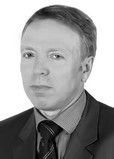Recruiting trainees of retraining programs of «University Physical Education Teacher»
Фотографии:
ˑ:
Dr.Hab., Professor V.N. Irkhin1
Dr.Hab., Professor I.F. Isaev1
PhD, Associate Professor O.V. Amurskaya1
PhD, Associate Professor J.A. Strelkova1
1Belgorod State National Research University, Belgorod
One of the key challenges faced by the Russian educational system is the search for effective ways to maintain health of the younger generation. The article raises the issue of improvement of health and fitness activities of physical education teachers. It is shown that among the ways to solve this problem is to use during the teaching activities the ideas and principles of educational kinesiology: ideas of implementation of educational motor activity of students; formation of the new neural connections contributing to the effective interaction between the cerebral hemispheres, etc.; kinesiological principles (according to V.K. Balsevich): determination (characterized by the conservative and labile components of the morphofunctional profile of a person, as well as the development of his/ her physical fitness); adequacy (organization of health and fitness activities with due regard to the level of readiness of the bodily systems for perception of the training information); phase emphasis (equitable temporal distribution of physical loads of various orientation). It was concluded that effective health and fitness activity of a physical education teacher, which is based on the ideas and principles of educational kinesiology, is possible with the following pedagogical conditions: involvement of students in the health-saving motor activities supported by the kinesiology-based tools; creation of an emotionally-positive background at physical education lessons that would contribute to the accumulation of positive emotions in students through psycho-physiological emancipation; inclusion of incentives of personal meaning of kinesiology-based tools; realization of kinesiological potential of extracurricular health and fitness activities.
Keywords: educational kinesiology, health and fitness activities, physical education teacher.
References
- Bal'sevich V.K. Ontokineziologiya cheloveka [Human ontokinesiology]. M.: Teoriya i praktika fiz. kultury i sporta publ., 2000. 275 p.
- Gudhart D. Duralnaya torziya i myshechnye funktsionalnye tsepi [Dural torsion and muscle functional chains]. LFK i massazh. 2005. no. 9. pp. 51-54.
- Polshchikova O.V. Formirovanie motivatsii budushchikh uchiteley k zdorovomu obrazu zhizni kineziologicheskimi sredstvami [Future teacher's healthy lifestyle motivation formation by kinesiological means]. PhD diss.. Belgorod, 2012. 196 p.
- Feldenkrais M. Iskusstvo dvizheniya. Uroki mastera [The Art of Movement. The lessons of the master]. Trandl. Engl. A. Zaslavskaya. M.: Eksmo publ., 2003. 352 p
- Dennison Paul, Dennison Gail Brain Gym. Ventura, Calif.: Edu-Kinesthetics, 1994. 45 р.
- Hannaford Carla. Smart Moves: Why Learning Is Not All in Your Head. Arlington. Va.: Great Ocean Publishers, 1995. 237 р.



 Журнал "THEORY AND PRACTICE
Журнал "THEORY AND PRACTICE